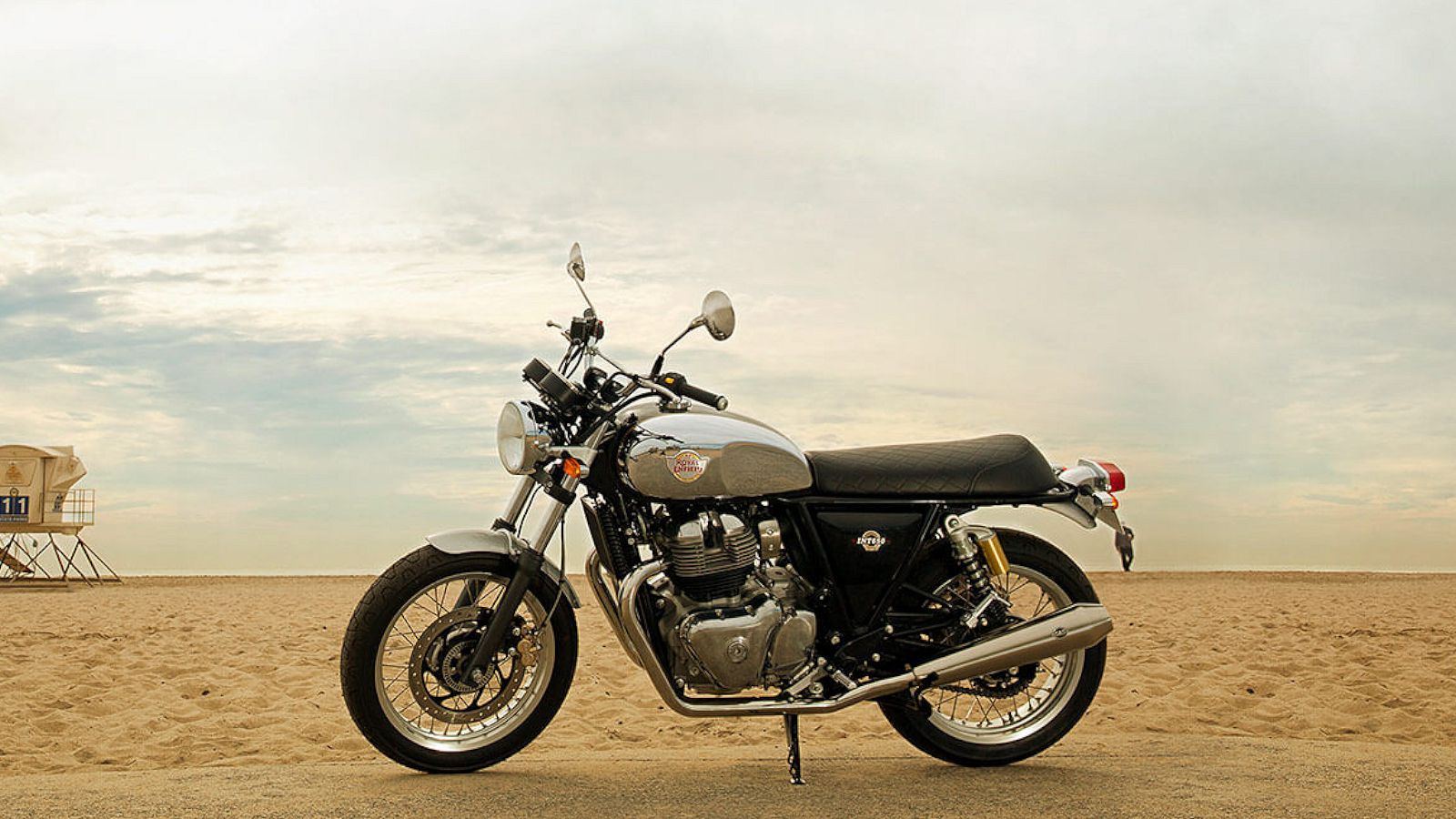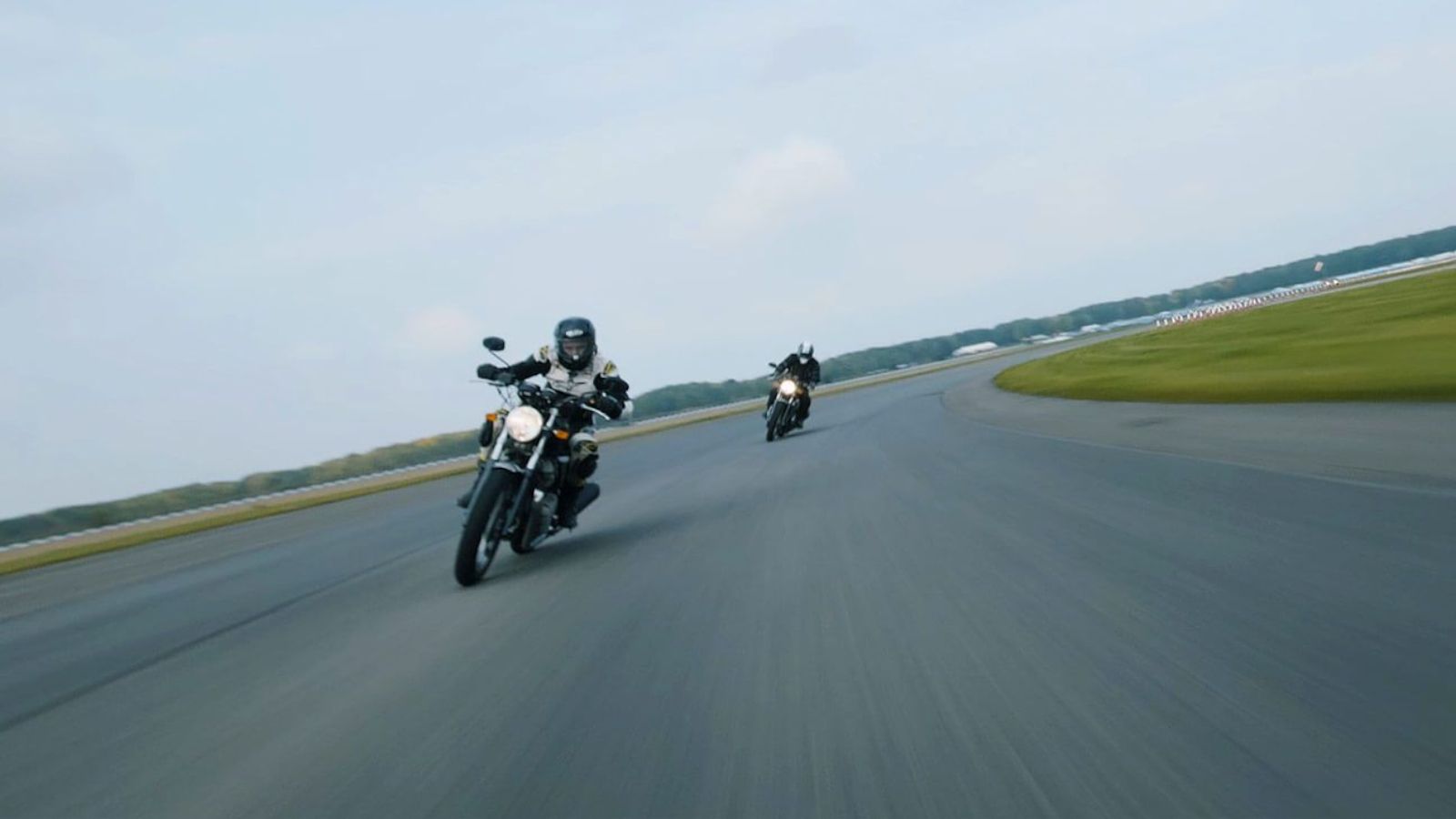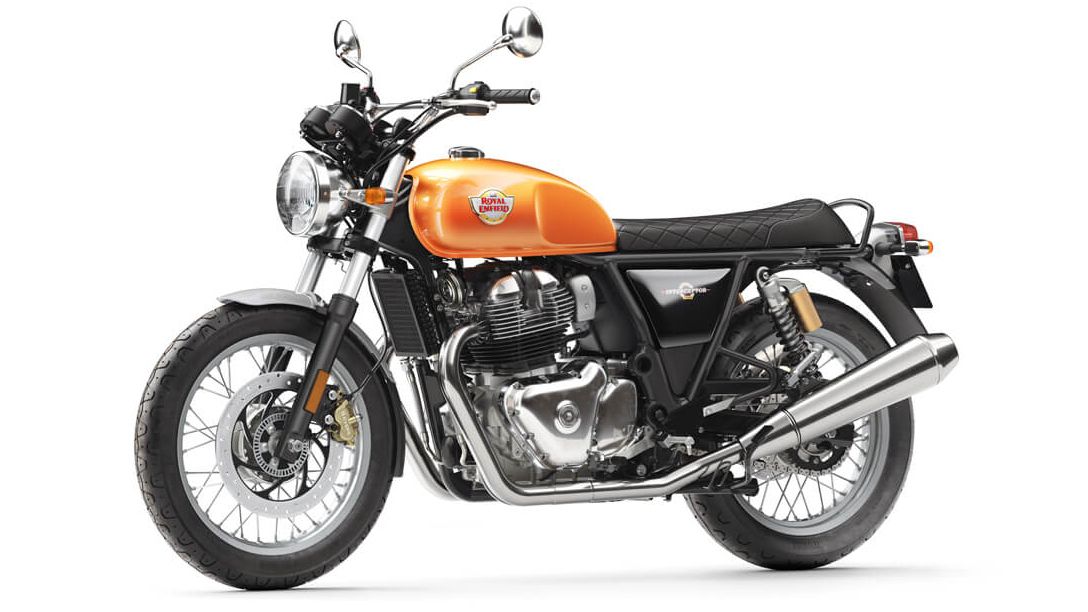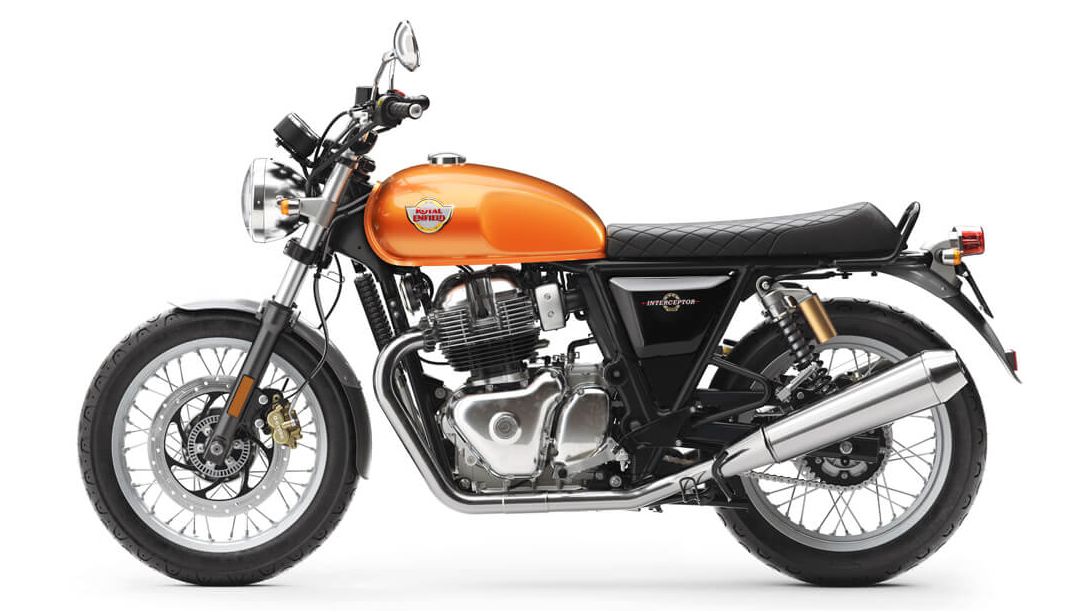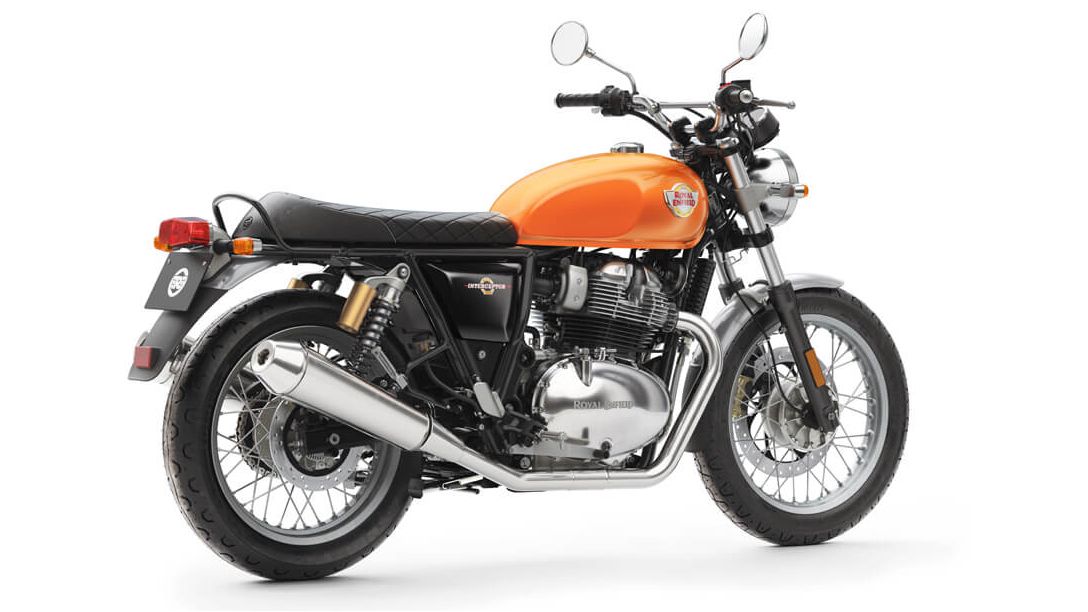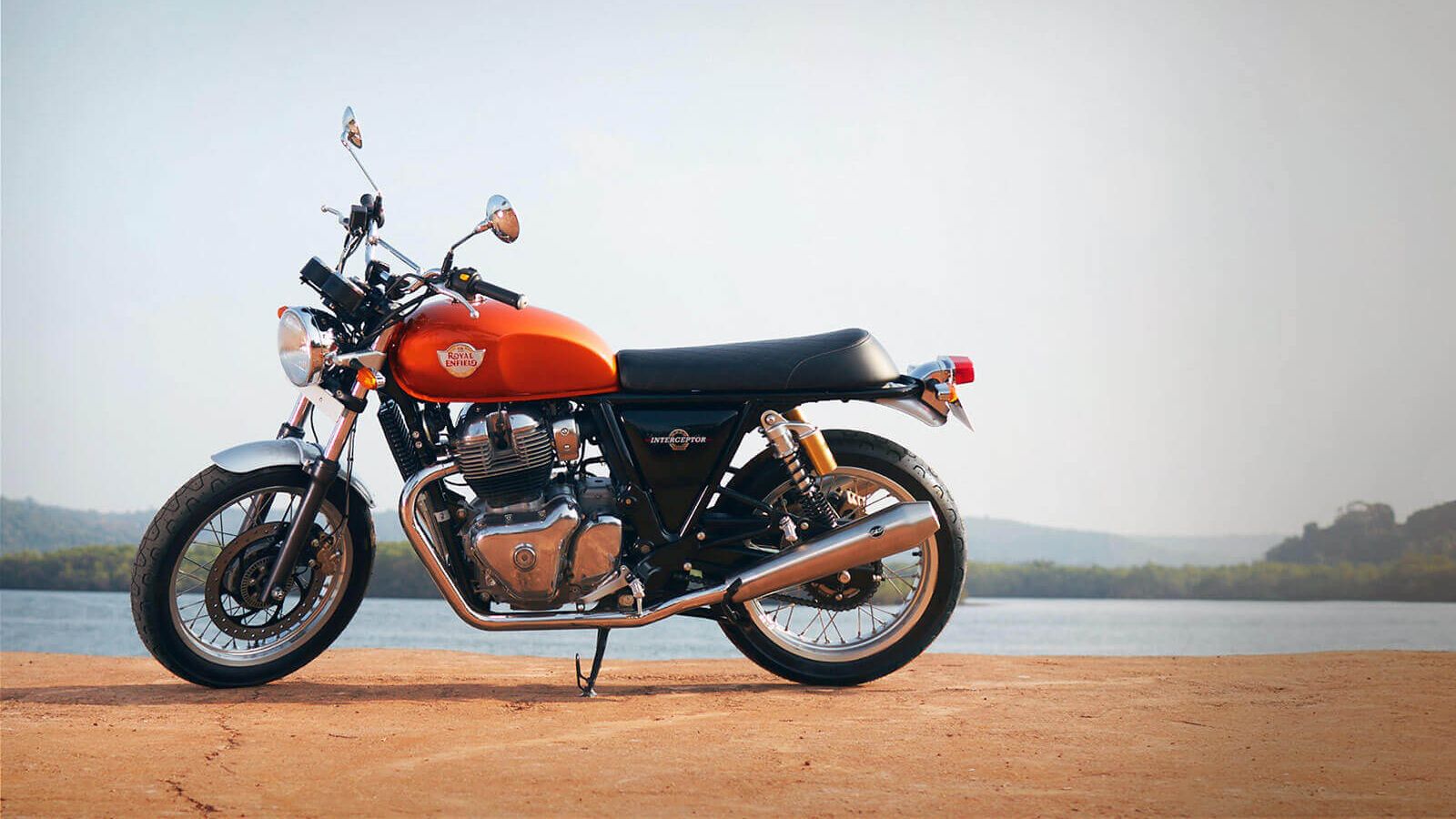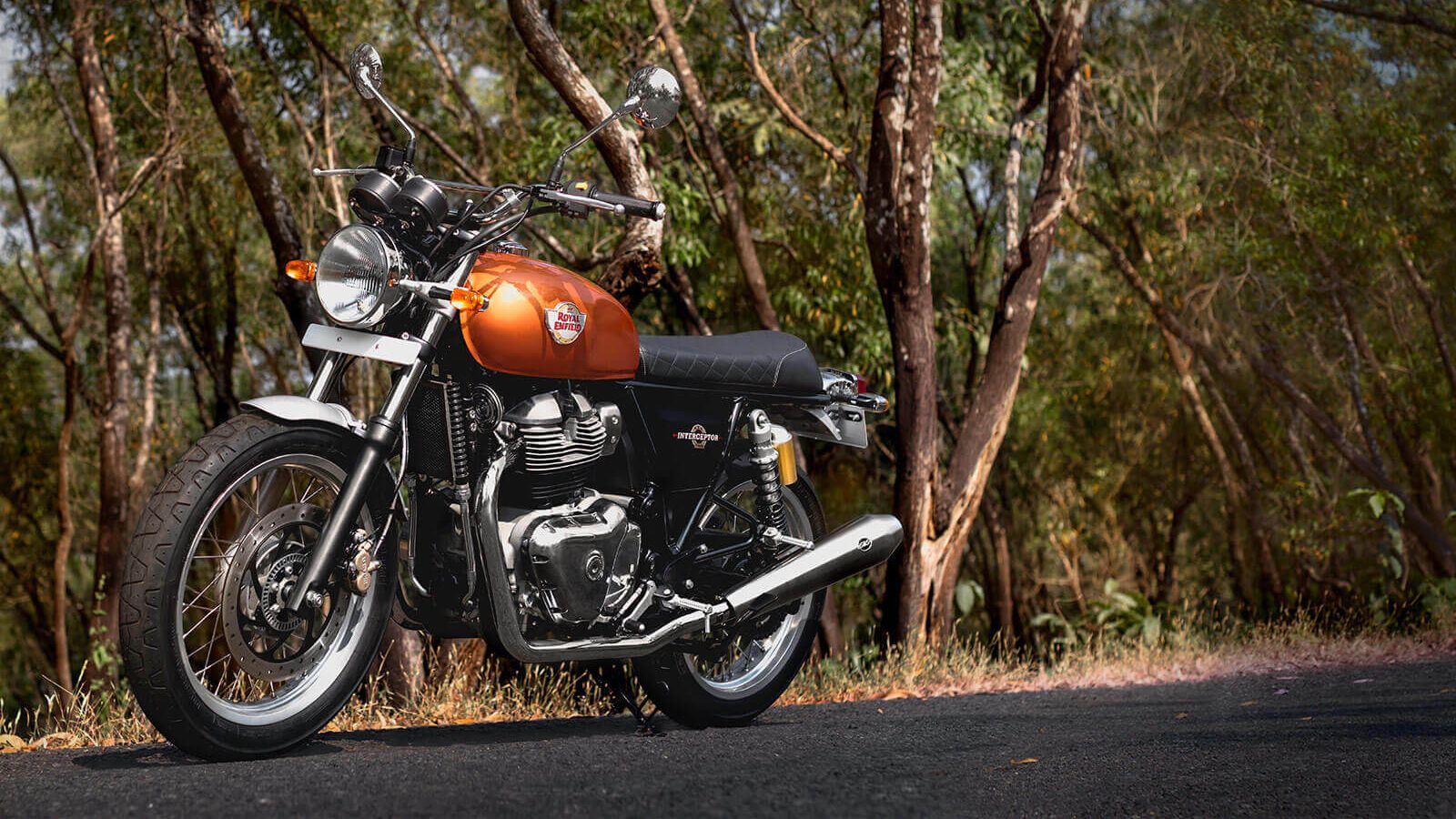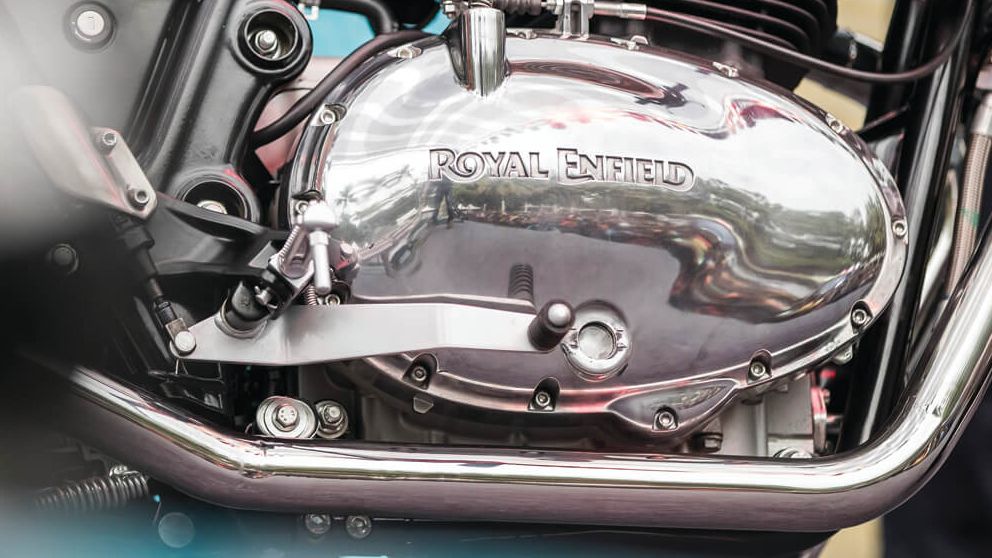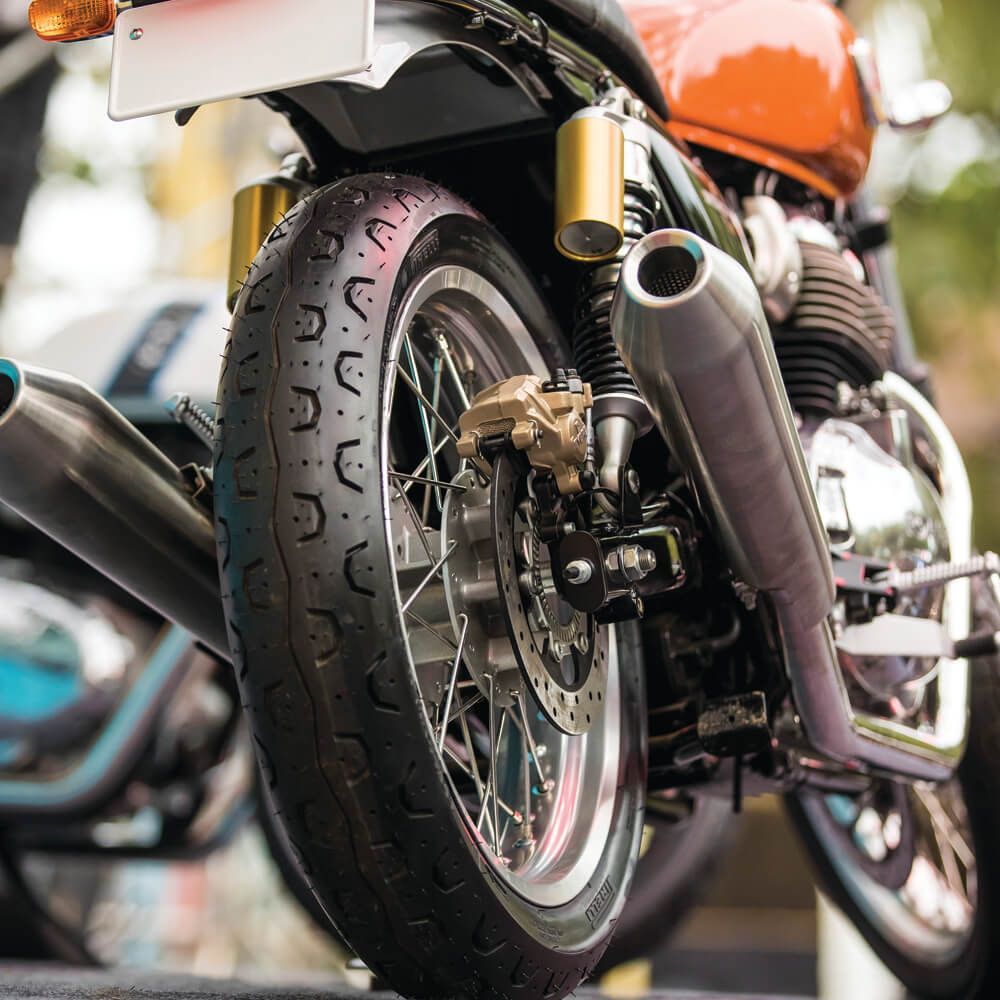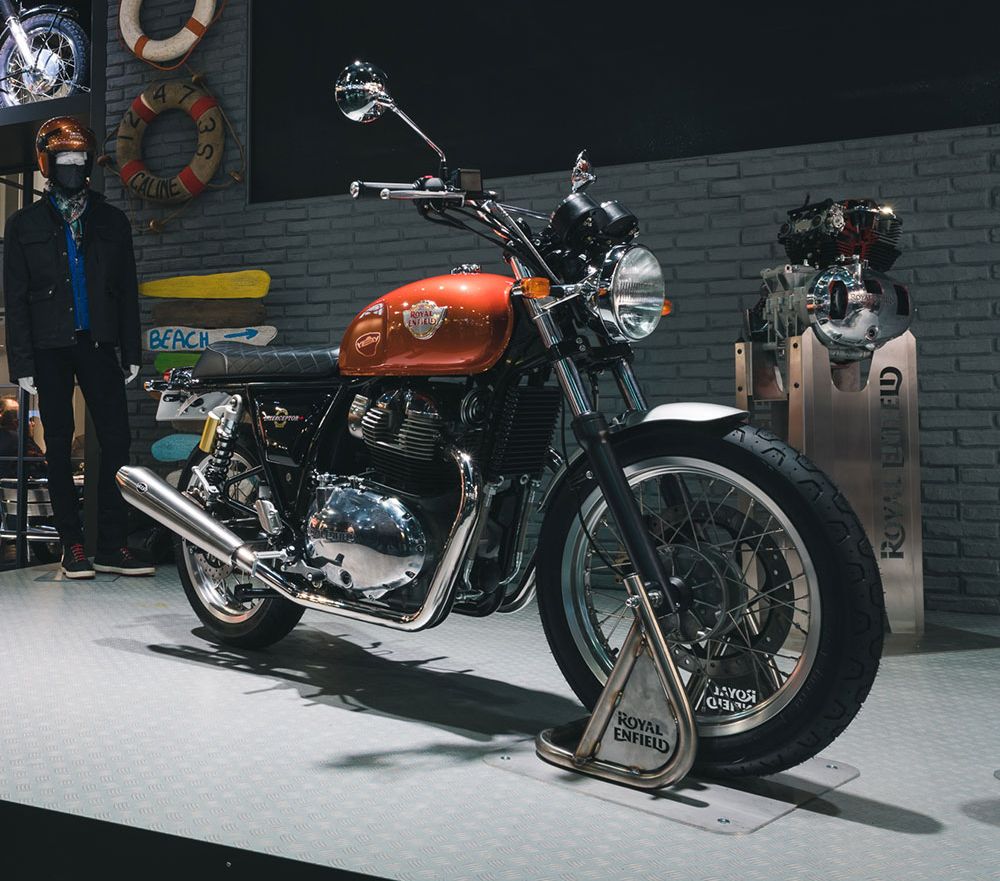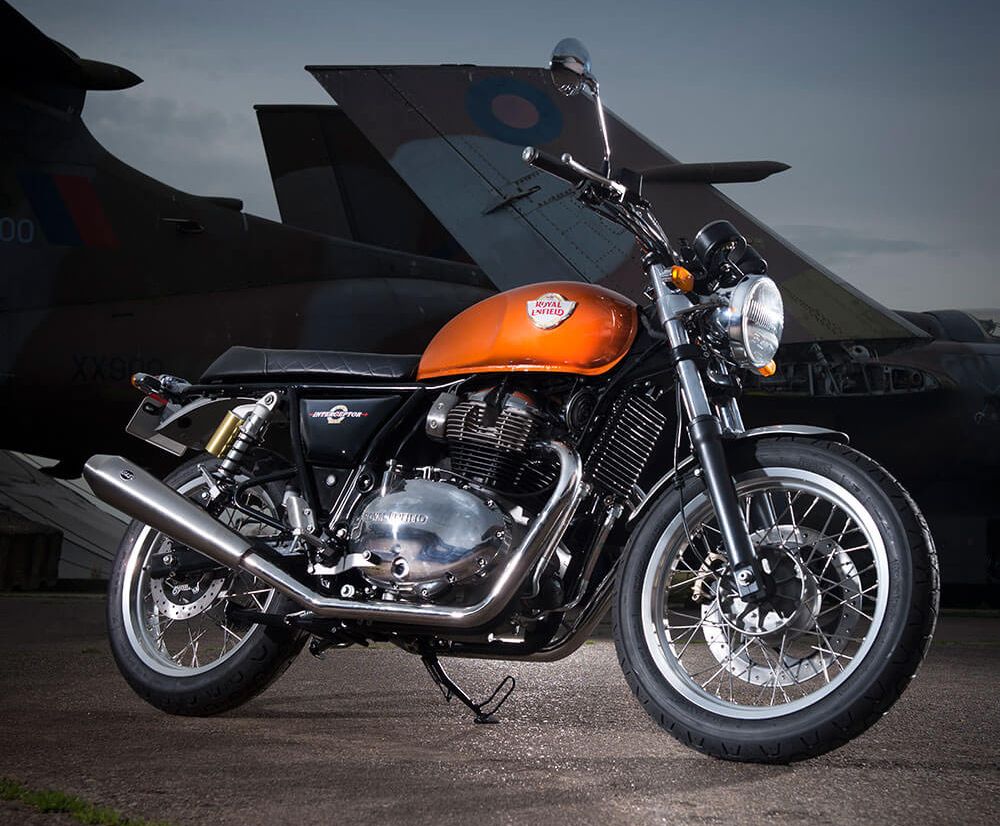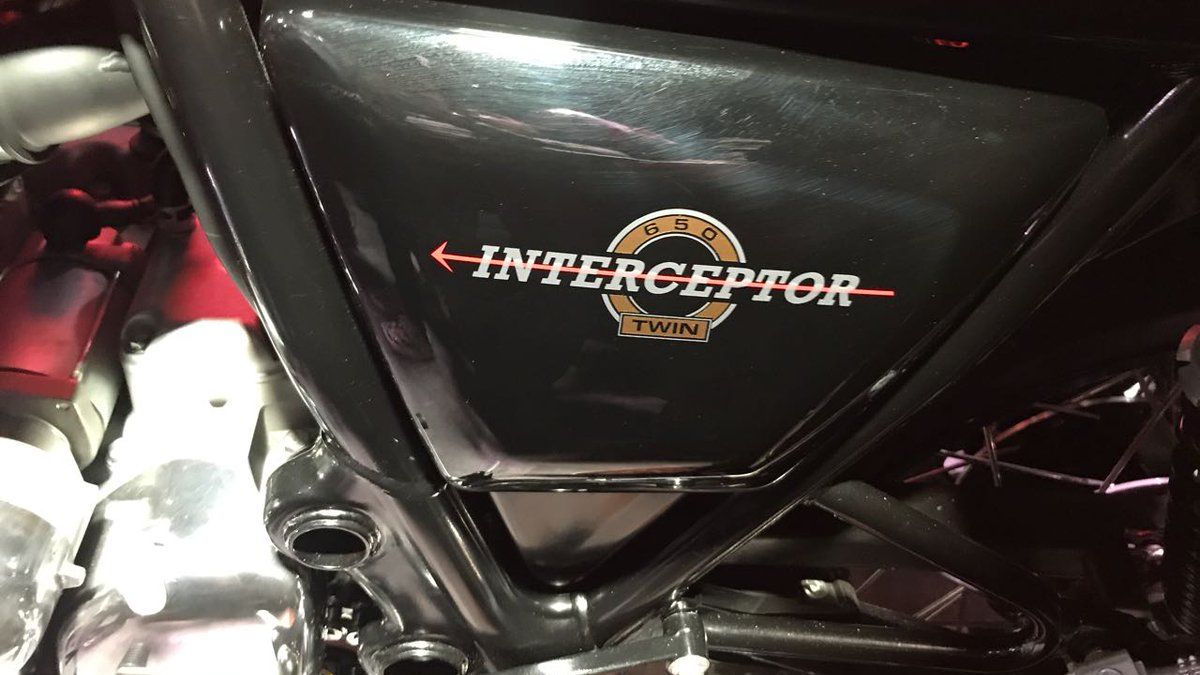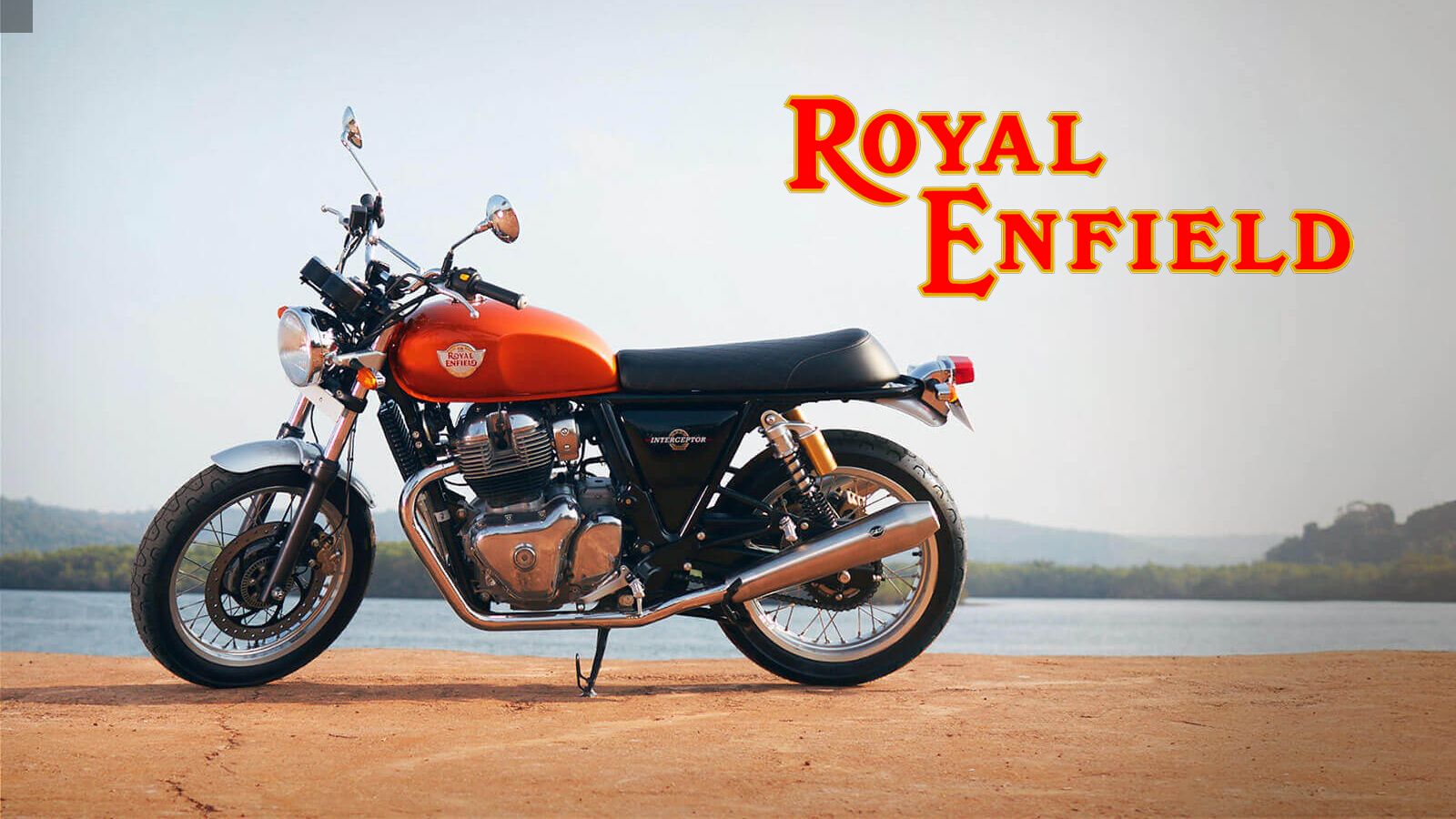Royal Enfield hit the 2018 model year running with an all-new, 650 Twin engine that comes with a brand-new Interceptor wrapped around it. All new from the ground up, the Interceptor 650 has improved handling and agility that its single-cylinder predecessors just couldn't match. It's a hot-hot release in its homeland, but will the U.S. market receive it with as much enthusiasm?
Continue reading for my first look at the Royal Enfield Interceptor 650.
2018 Royal Enfield Interceptor 650
- Make: Array
- Model: 2018 Royal Enfield Interceptor 650
- Engine/Motor: Parallel-Twin
- [do not use] Vehicle Model: Array
Design
This is a fairly important step for India-based Royal Enfield. Not only is this the first Interceptor the company has produced since the early '70s, but it's also the very first new engine to come out of the brand since the company left British control. Small potatoes? Hardly. This engine -- and the Interceptor it drives -- is meant to carry the company into the foreseeable future with a (slightly) more modern design and performance envelope.
Classic looks with contemporary tech is a winning combination, especially now as the Millennials have shown themselves to have a good eye for old-school style with an expectation of modern fandanglery. Is this enough to prop up the brand that gets little play on our side of the pond and even less love due to that lack of popular use and abortive attempt by Indian Motorcycle to import and rebrand R.E. bikes as Indians? Hard to say just yet, but the consumers in India seem to be gobbling up the new Twins with relish, so we'll see if that success crosses to our market in due time.
What we have here is a reintroduction of the classic Interceptor that was originally designed with a West Coast flair. The factory stayed faithful to that California flavor when it laid out the lines for this newest version, and like the original, it fits the standard/UJM-style mold to a tee. That kind of bike was also the foundation for the original cafe' racers, a fact the engineers also capitalized upon for even more nostalgic appeal. I'm callin' it mission accomplie, folks.
The charm just oozes from every pore starting with the narrow front fender that competes not at all with the front wheel, but simply does its job containing the spray while acting as a nice accent over the laced rim. Blackout fork sliders join the achromatic tripleclamps, headlight can (only on the Ravishing Red model) and twin instrument clocks for a nice custom vibe that ties right into the Interceptor's own storied past. Round headlight, round instrument housings and round mirrors (see a pattern?) reinforce the dated looks. The teardrop fuel tank bears the old knee indents so prevalent in British design, and while the flanged tank construction does as well, it also has the unfortunate tendency to kind of cheapen the overall appearance.
Redemption comes in the form of the checkered bench seat that looks cool, leaves plenty of room for a passenger as well as room for taller riders to slide fore and aft as needed, and it looks cool. Did I mention that? Yeah, I thought that bit was worth repeating. As usual, the taillight/tagholder/turn signals are a bit clunky, but at least you don't have to look at it while riding. The upswept exhaust adds to the sportiness and I am bothered not at all by the modern kick afforded by the piggyback shocks; just shows that the engineers didn't neglect performance for the sake of vanity.
Chassis
Much of the cafe'-tastic vibe comes courtesy of the straight back of the tubular steel, single-downtube/double-cradle frame. The steering head kicks the 41 mm, standard front forks out to a 24-degree rake with 4.3 inches of travel to go with the 3.4-inch range of motion of the coil-over reservoir shocks out back. Symmetrical rims mount a 100/90-18 up front and 130/70-18 out back with the whitewalls wisely mounted to the inside.
As you'd expect, this isn't a very heavy bike at 445 pounds (oiled, but not gassed), and at only 31.6-inches tall, it's fairly nimble and easy to lift off the sidestand. Is it knee-dragger nimble? Not a chance. This bike is meant for a more relaxed (read: dignified) kind of riding with an upright rider's triangle and low footrests. At that weight, the single 320 mm front disc and 240 mm rear provide plenty of stopping power with an ABS feature that allows you to safely wring every ounce out of the anchors.
|
Frame: |
Steel tubular, double cradle frame |
|
Front Suspension: |
41 mm front fork, 4.3 inches (110 mm) travel |
|
Rear Suspension: |
Twin coil-over shocks, 3.5 inches (88 mm) travel |
|
Rake: |
24 degrees |
|
Front Wheel: |
2.50x18” |
|
Rear Wheel: |
3.50x18” |
|
Front tire: |
100/90-18 |
|
Rear tire: |
130/70-18 |
|
Front Brake: |
320 mm disc, ABS |
|
Rear Brake: |
240 mm disc, ABS |
Drivetrain
The setting is nice to be sure, but it's the crown jewel that is the new 650 Twin that steals the show. This net-new powerplant, while the first to be born under the current administration, carries the unmistakable genetic markers from its British forebears. The transverse, vertical-twin configuration, exhaust routing and even the shape of the case covers reveal an acorn that didn't fall particularly far from the tree.
Waste heat gets a double-whammy with cooling fins that meet old-school expectations and an oil cooler mounted high on the downtube to protect the engine's lifeblood and vent even more heat to atmosphere. A 78 mm bore and 67.8 mm stroke (times two) gives it a 648 cc displacement with a 9.5-to-1 compression ratio that is low enough to take mid-grade fuel, and should run without giving the bottom-end bearings a beating.
In the bottom end, a one-piece cast crankshaft runs with a 270-degree offset in the throws -- and necessarily, the firing order -- to give the engine a nice burble at idle and a bit of extra traction on soft surfaces due to the (relatively) long pause between power pulses. A crank-driven timing chain operates the single over-head cam to time the 8-valve head with electronic fuel injection to manage the fuel delivery.
What does this all give us? Well, the factory claims 38 pounds o' grunt at 4,000 rpm with 47 horsepower that develops fully by the 7,100 rpm mark, so it's a bit on the mild side. Again; a dignified ride. Power flows through a six-speed tranny and down a tough chain drive for the final connection to the rear hoop and pavement.
|
Engine: |
4 stroke, single overhead cam, air-oil cooled, 648 cc parallel twin |
|
Power: |
47 hp @ 7100 rpm |
|
Torque: |
38.3 lb-ft @ 4,000 rpm (52 Nm @ 4,000 rpm) |
|
Bore x Stroke: |
78 mm x 67.8 mm |
|
Compression Ratio: |
9.5:1 |
|
Gearbox: |
6 speed |
|
Fuel Management: |
Fuel injection |
|
Ignition: |
Digital spark ignition - TCI |
Price
I haven't seen a price yet for the U.S. market, but converting rupees to dollars would put it about $5,450. I find that plausible. If it is much more than that, it won't compete in our market as an entry level ride or a commuter; both jobs for which it is well suited.
|
Colors: |
Orange Crush, Ravishing Red, Silver Spectre, Chrome |
|
Price: |
TBD |
Competitor
Royal Enfield has been under Indian (the country, not the manufacturer) control for a minute now and has indeed managed to design an all-new engine for a fresh branch on the old family tree, but how far did they get from their roots? In looking for a competitor, I decided to go straight to the source for a slice of the true British flavor and landed on Triumph's Bonneville T100. The similarities are remarkable, but at the end of the day, unsurprising.
Wire wheels, blackout treatment and a '60s design greets the eye complete with flanged tank and straight bench seat. Is one a copy of the other? Hardly, they simply hail back to the same time period and bike culture. The straight-spine frame lays the foundation with non-adjustable, right-way-up, KYB forks that add bellow gaiters for another classic touch. Brakes are similar with a single disc at both ends and ABS protection as part of the stock package.
The similarities in the engine are mainly cosmetic. Yeah, they're both vertical twins, and both run a 270-degree firing order, but in spite of the freshly-minted vintage of the R.E. Mill, Triumph is still light years ahead. RbW, TC and an electronic immobilizer play a large part in propelling Trumpet to the top here, and that's before we even look at the 900 cc displacement with its 55 ponies and 59 pound-feet of torque.
I have yet to see a price for the Interceptor in the U.S. market, but I will bet my bottom dollar that it's less than the 10- to 11-grand sticker on the Bonnie, probably to the tune of around 40 percent or so.
He Said
“This bike may be a big deal in India, and credit where it's due, R.E. gets props for the new engine. But, it's still generations behind every major builder, and I have serious reservations concerning reliability and availability of parts and service on our side of the pond. Perhaps I'll be forced to revise that with a healthy helping of crow one day, but till they prove me wrong I'm sticking to it.”
She Said
My wife and fellow motorcycle writer. Allyn Hinton, says, “I see where this release is a big deal in India, but I don't see it really making much of an impact in the U.S. market. At least the 650 Twin is capable of interstate travel where the single cylinder models really aren't, not for more than an exit or two. The Interceptor 650 really is a nice-looking bike, I'll give it that. It would be a step up from say a Suzuki TU250X or a Yamaha SR400 to get the bigger engine in that charming classic style.”
Specifications
|
Engine & Drivetrain: |
|
|
Engine: |
4 stroke, single overhead cam, air-oil cooled, 648 cc parallel twin |
|
Power: |
47 hp @ 7100 rpm |
|
Torque: |
38.3 lb-ft @ 4,000 rpm (52 Nm @ 4,000 rpm) |
|
Bore x Stroke: |
78 mm x 67.8 mm |
|
Compression Ratio: |
9.5:1 |
|
Gearbox: |
6 speed |
|
Fuel Management: |
Fuel injection |
|
Ignition: |
Digital spark ignition - TCI |
|
Chassis: |
|
|
Frame: |
Steel tubular, double cradle frame |
|
Front Suspension: |
41 mm front fork, 4.3 inches (110 mm) travel |
|
Rear Suspension: |
Twin coil-over shocks, 3.5 inches (88 mm) travel |
|
Rake: |
24 degrees |
|
Front Wheel: |
2.50x18” |
|
Rear Wheel: |
3.50x18” |
|
Front tire” |
100/90-18 |
|
Rear tire: |
130/70-18 |
|
Front Brake: |
320 mm disc, ABS |
|
Rear Brake: |
240 mm disc, ABS |
|
Dimensions & Capacities: |
|
|
Total Length: |
83.5 inches (2122 mm) |
|
Total Height: |
45.9 inches (1165 mm) |
|
Total Width: |
31.1 inches (789 mm) |
|
Ground Clearance: |
6.9 inches (174 mm) |
|
Seat Height: |
31.7 inches (804 mm |
|
Tank Capacity: |
3.6 Gallons (13.7 Litres) |
|
Kerb Weight (no fuel): |
445.3 pounds (202 kg) |
|
Payload: |
440.9 pounds (200 kg) |
|
Details: |
|
|
Colors: |
Orange Crush, Ravishing Red, Silver Spectre, Chrome |
|
Price: |
TBD |
References
See our review of the Triumph Bonneville T100.

